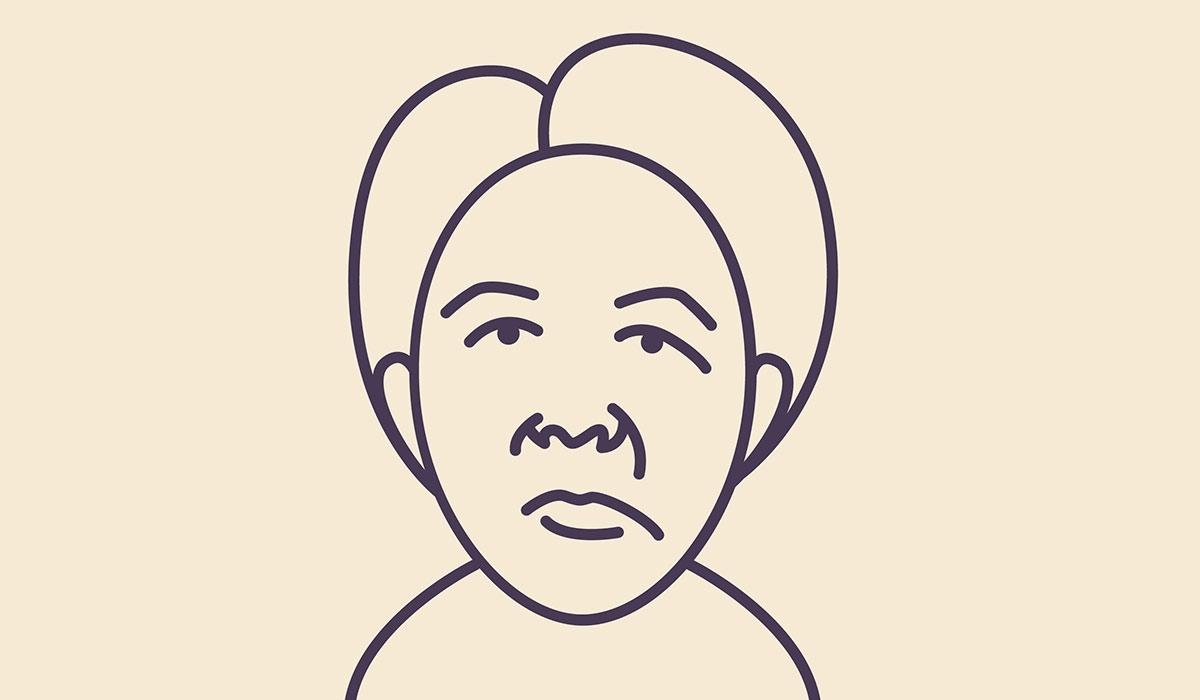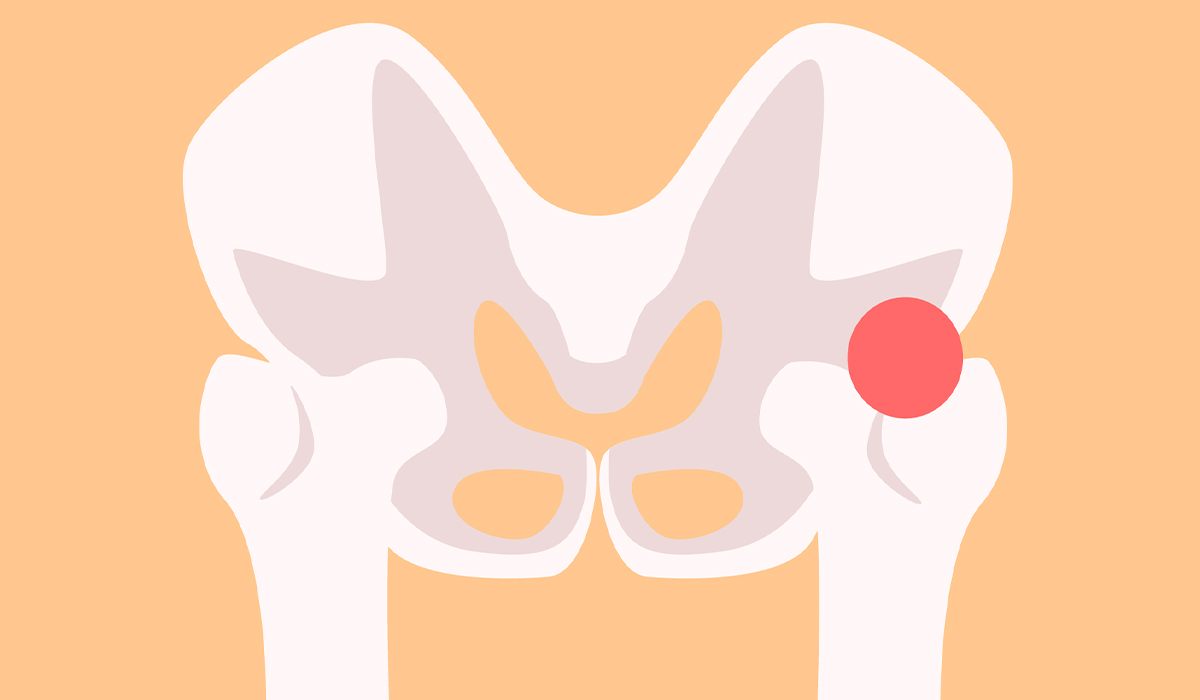According to the characterization established by the World Health Organization (WHO), obesity is the excessive accumulation of fat tissue in the organism. As a result, it leads to the development of other disorders. The diagnosis of obesity is typically made based on body mass index (BMI). It happens when it is more than 30 kg/m2.
However, this is not an ideal indicator and cannot be used, for example, in people practicing strength sports with extensive musculature or pregnant women. In people under 18 years of age, we refer to the BMI index as percentile charts and on this basis.

Another method useful in diagnostics is measuring body composition using the BIA method (bioelectrical impedance analysis). Thanks to such an analysis, we can precisely determine the body fat content and assess its excess. Its correct content varies depending on age and gender but should not exceed 25% in men and 35% in women. Nevertheless, this technique cannot be used in children, pregnant women, and people with an implanted pacemaker.
Due to the dominant area of accumulation of excess fat tissue, obesity is divided into gynoid-gluteal-thigh (so-called pear) and android-abdominal (so-called apple). We make this classification thanks to the waist-hip ratio. Abdominal obesity is diagnosed when WHR is: in women more than 0.8; in men more than 1. Gluteo-femoral obesity is diagnosed when WHR is: in women less than 0.8; in men less than 1.
The last diagnostic indicator is the measurement of waist circumference, which, as assessed in itself, may indicate an increased risk of obesity-related diseases. In men, it should not exceed 102 cm, and in women 88 cm.
Causes
Currently, many scientists believe that obesity is not a metabolic disease but develops as a consequence of eating disorders. The problem of obesity results from the combination of many abnormalities; the reasons for its appearance are complex. The following aspects can contribute to obesity: environmental conditions, congenital syndromes, acquired diseases, and treatment.
Environmental Factors
External environmental conditions have a significant function in the development of obesity. They are concerned with factors that the patient is currently in contact with or has had in the past. The primary causes of obesity include:
- Inappropriate eating habits, e.g., eating highly processed food, products rich in sugar and fat and low in dietary fiber
- Little physical exercise
- Prolonged excess of the body’s energy requirements
- Experiencing chronic stress
Genetic Factors
Research is ongoing to identify genes whose mutations may contribute to obesity development. So far, such a connection has been described for some substances concerned in the axis that control the feeling of hunger and satiety, e.g., leptin and proopiomelanocortin (POMC).
Obesity may occur as a symptom of genetically determined disease syndromes, such as Albright hereditary osteodystrophy and Prader-Willi syndrome. Then it is often accompanied by dysmorphic features that are visible in the external appearance, developmental defects, and mental disability.
However, the occurrence of obesity among members of the same family most often results from the repetition of inappropriate eating habits and unhealthy lifestyle patterns.
Psychological Factors
Obesity develops as a result of eating disorders, which may result from mental problems. Lack of self-acceptance, difficulties in dealing with emotions, and chronic stress may cause the patient to stop taking care of their meals or to attach too much importance to them. Additionally, eating is a common way to release accumulated tension. The most common psychological factors that may lead to obesity include:
- Difficulties in maturely meeting psychological needs, e.g., love or security
- Lower self-esteem and mood, which can lead to depression
- Food addiction
- Binge eating syndrome (BED) – the individual then loses control over the quality and quantity of food consumed. Such attacks may occur due to anxiety, nervousness, or boredom.
- Night eating syndrome (NES), in which the patient feels an aversion to eating in the morning but tends to overeat in the evening
Hormonal Factors
Endocrine disorders may impair the functioning of the axes that regulate food intake and the feeling of hunger and satiety. Hormones often control the course of many metabolic processes, therefore their improper secretion leads to a reduction in energy expenditure, e.g., by limiting heat production or fundamental metabolism. Obesity most often develops in the course of:
- Growth hormone deficiency
- Excess androgens in women
- Incomplete development of the gonads, i.e., internal genital organs
- Hypopituitarism
- Hypothyroidism
- Cushing’s disease or Cushing’s syndrome
Side Effects of Taking Medications
Obesity may occur during treatment for other conditions. Excess fat tissue accumulates in the body due to the use of preparations that:
- Increase food intake, e.g., glucocorticosteroids, some antidepressants, and antipsychotics
- Decrease the energy expenditure of the organism, e.g., beta-blockers, which are used in the treatment of cardiovascular conditions.
Effects
Obesity is associated with excessive accumulation of fat tissue. Its cells are metabolically active, which leads to an imbalance in the processes that occur in the body. Chronic inflammation then develops, and the blood’s concentration of free fatty acids increases. This mechanism creates insulin resistance, which often accompanies obesity.
The above-mentioned metabolic disorders lead to the development of complications related to metabolism, including:
- Cardiovascular diseases, e.g., hypertension, coronary syndromes, and stroke
- Prediabetes, i.e., impaired fasting glucose (IFG) and impaired glucose tolerance (IGT)
- Type II diabetes
- Kidney damage
- Non-alcoholic fatty liver disease
- Hormonal disorders, e.g., regarding sex hormones, which may result in infertility, decreased growth hormone levels, and increased levels of the TSH hormone produced by the thyroid gland
- Cancer – in women, obesity most often contributes to the development of endometrial, breast, and gallbladder cancer, while in men, this mechanism may result in the development of esophageal adenocarcinoma, thyroid cancer, or colon cancer

Obesity also negatively affects other body functions. Its complications include, for example:
- Cholelithiasis
- Obstructive sleep apnea
- Asthma
- Stress urinary incontinence
- Mental disorders, including depression or anxiety disorders
- Osteoarthritis of joints, mainly hips, knees, and spine
Diagnosis
To diagnose obesity, it is necessary to perform three basic anthropometric measurements – body weight, height, and waist circumference. Measurements should be performed optimally:
- In the early morning hours
- By the same person (preferably a medical staff member; you can do it by yourself, but if this is not possible, it is worth asking another person for help)
- Using the same device
Here is how to measure body weight:
- The measurement should be performed on a standardized bathroom or medical scale according to the manufacturer’s instructions
- You should undress your outer clothing and wear only underwear (if the measurement is performed on a clothed person, the result is adjusted – the approximate weight of the clothing is subtracted from the result on the scale)
- The result is given with an accuracy of 0.1 kg
Here is how to measure height:
- The measurement should be performed using a height meter
- Remove shoes
- Take an upright and relaxed position. The knees and heels should be together. The upper limbs should be freely lowered along the body
- The specialist performing the measurement will check whether the patient has adopted the correct posture and positioned the head correctly
- The result is given with an accuracy of 0.5 cm
Body weight and height are necessary to calculate body mass index (BMI)—the simplest tool for recognizing and classifying obesity is the World Health Organization (WHO) criteria. The simplest way is to use the calculator.
In pregnant women, people practicing sports, and doing physical work, BMI may be an unreliable parameter. In physically active people, a high BMI may be incorrectly interpreted as overweight or obesity. A large percentage of muscle mass increases body weight, thus BMI. Similarly, in pregnant women, the BMI value may be increased due to the weight of the fetus and amniotic fluid.
BMI allows you to determine overweight and obesity but does not show the distribution of fat tissue. Measuring your waist circumference is a simple method to determine your waist distribution. Diagnosing abdominal obesity is important because it significantly increases the risk of metabolic complications, including type 2 diabetes, compared to pear-shaped obesity.
Waist circumference is measured halfway between the hip bone’s highest upper edge and the rib arch’s lowest point – the centimeter should be drawn horizontally in front along the navel line (see the figure below). Make sure the tape is straight and not twisted. The measurement is optimally performed on exhalation. It is worth performing the measurement twice and calculating the average result as the final result. The result is given with an accuracy of 0.1 cm.
Treatment
Overweight and obesity are diseases that require therapeutic measures to prevent their possible complications. Treatment should focus not only on reducing body weight but also on improving the patient’s quality of life and metabolic parameters of their body.
The most effective method of treating overweight and obesity is weight reduction, achieved by introducing a properly balanced reduction diet and appropriating the patient’s ability to exercise. A specialist dietician will prepare the nutritional plan, and the reduction process should be treated as treatment. In such a case, excessive body weight loss should be gradual – preferably in the range of 0.5-1 kg per week unless there are other medical indications.
The exercises introduced should be individually tailored to the needs and capabilities of the treated person, and professional help is also significant here. For very obese people, specialists recommend walking or exercising in the swimming pool, which will not burden the joints so much. Thanks to the care of specialists, the weight loss process can be controlled, which helps prevent the so-called “yo-yo effect”.

Treating obesity is challenging and long-lasting because it requires changing habits that have accompanied the person for many years. Therefore, it is best to consult a specialist when overweight is diagnosed. It is significant to start treatment quickly in obese children. The weight reduction process in people under 18 should be carried out by a dietitian – due to the nutritional needs of the developing body.
The best effects of therapy are achieved by patients who receive comprehensive support from a team of specialists because the disease they are dealing with is related to various aspects of their lives. The specialists select treatment individually and respond to the patient’s needs.
The obesity treatment process may include the following:
- Dietary management and changing eating habits
- Introduction of physical activity, which, however, must be adapted to the health and condition of the patient
- Pharmacotherapy, i.e., taking medications that can facilitate compliance with recommendations, reduce the risk of developing complications, and improve the patient’s quality of life
- Surgical or endoscopic methods – when conservative treatment does not bring the expected results
Obesity is a disease that affects not only the body but often also the soul. Sometimes, it may be caused by deep, unconscious internal conflicts or difficult experiences. It also usually becomes the cause of psychological problems that require therapy (e.g., anxiety, shame, submissiveness, alexithymia, body image disorders, lowered self-esteem, withdrawal from interpersonal contacts, or experiencing prejudice and discrimination).
Depending on the therapist’s education and preferences, as well as the specificity of the problem, psychotherapy may be implemented in the following areas:
- Cognitive-behavioral (emphasis on changing beliefs and behaviors)
- Psychodynamic (focus on early childhood experiences)
- Systemic (working with the whole family)
- Short-term (searching for solutions and using available resources)
Psychotherapy can also be conducted individually or in groups. The therapeutic group usually consists of people experiencing similar types of difficulties.
Prevention
The following tips on how to prevent obesity are aimed not only at obese and overweight people but also at people of normal weight. Let us remember that it is easier and cheaper to prevent obesity than to treat its advanced forms and possible complications:
- Exercise regularly – at least 3-4 times a week for at least 45 minutes. Recommended ways of activity are brisk walking or jogging, cycling, swimming, or starting daily walks.
- Eat healthily – make sure your diet includes vegetables, fruit, dairy products, and whole grains. Count calories and avoid regularly eating products rich in simple sugars and saturated fats. The diet must be low-calorie but at the same time tasty and varied so that it can be maintained without great sacrifices. Remember to eat regularly (5-6 small meals at regular intervals). Eat your last meal 3-4 hours before bedtime.
- Monitor your weight regularly – weigh yourself one to two times a week and record your weight in a diary. It will help you catch small weight gains before they become serious problems.
Remember that untreated obesity can lead to health complications such as:
- Hypertension
- Ischemic heart disease
- Type II diabetes
- Depression
- Cancer of the large intestine, gallbladder, breast, and prostate
- Cholelithiasis (gallstones)
- Osteoarthritis of the spine and lower limbs (hips and knees)
- Hormonal disorders
- Fatty liver
- Sleep apnea
It is also worth remembering that excessive weight makes it challenging to perform almost all daily activities, hurts self-esteem, and may cause a person to be perceived as unattractive in society, which worsens social relationships. All this can lead to social isolation, feelings of shame, and depression.
Sources
- Obesity. WHO. https://www.who.int/westernpacific/health-topics/obesity#tab=tab_1.
- Physiology, Body Mass Index. NIH. https://www.ncbi.nlm.nih.gov/books/NBK535456/.
- Bioelectrical impedance vector analysis in obese and overweight children. NIH. https://www.ncbi.nlm.nih.gov/pmc/articles/PMC6345442/.
- Body mass index, waist circumference, waist-to-hip ratio, and body fat in relation to health care use in the Canadian Longitudinal Study on Aging. NIH. https://pubmed.ncbi.nlm.nih.gov/33432110/.
- Obesity. NIH. https://www.ncbi.nlm.nih.gov/books/NBK459357/.
- Social and Environmental Factors Influencing Obesity. NIH. https://www.ncbi.nlm.nih.gov/books/NBK278977/.
- Genetics and Obesity. NIH. https://www.ncbi.nlm.nih.gov/books/NBK573068/.
- Eating Disorders: About More Than Food. NIH. https://www.nimh.nih.gov/health/publications/eating-disorders.
- The Relationship between Psychological Factors and Weight Gain. NIH. https://www.ncbi.nlm.nih.gov/pmc/articles/PMC7700826/.
- Endocrine Changes in Obesity. NIH. https://www.ncbi.nlm.nih.gov/books/NBK279053/.
- Drugs That Affect Body Weight, Body Fat Distribution, and Metabolism. NIH. https://www.ncbi.nlm.nih.gov/books/NBK537590/.
- Obesity: The Fat Tissue Disease Version of Cancer. NIH. https://www.ncbi.nlm.nih.gov/pmc/articles/PMC9221301/.
- The Related Metabolic Diseases and Treatments of Obesity. NIH. https://www.ncbi.nlm.nih.gov/pmc/articles/PMC9498506/.
- Health Risks of Overweight & Obesity. NIH. https://www.niddk.nih.gov/health-information/weight-management/adult-overweight-obesity/health-risks.
- Diagnosis. NHS. https://www.nhs.uk/conditions/obesity/diagnosis/.
- Treatment. NIH. https://www.nhlbi.nih.gov/health/overweight-and-obesity/treatment.
- The Effectiveness of Supportive Psychotherapy in Weight Loss in a Group of Young Overweight and Obese Women. NIH. https://pubmed.ncbi.nlm.nih.gov/33562001/.
- Obesity Prevention and Management. NIH. https://www.ncbi.nlm.nih.gov/books/NBK568511/.















